9 Low-Fat Foods That Are Actually Unhealthy

The low-fat craze of the 1980s and 1990s may have been well-intentioned, but if you ask today’s health professionals, it probably did more harm than good. Though the idea went that cutting down on fat would cut calories (and therefore promote weight loss), we now know that not all fats are created equal. Some, like omega-3 fatty acids and monounsaturated fats, have tremendous health benefits like reducing inflammation and promoting heart health. Even the health profile of saturated fats is far more complex than we once believed.
Regardless of the type, fat isn’t a dirty word—it’s a necessary macronutrient for human life. (And it’s now clear that eating fat doesn’t make you fat.) Still, some food manufacturers continue to make low-fat versions of their products. For some folks who need a low-fat diet for medical reasons, this can be a boon. But for many of us, foods that have had their fat engineered into oblivion are not only unnecessary but potentially harmful. Often, by removing naturally occurring fat, food manufacturers must replace it with other, not-so-healthy fillers, emulsifiers, and other ingredients that don’t add nutrition.
Before you snag a “light” or “diet” food off the grocery shelf, check out this list of 9 low-fat items that aren’t as healthy as you might think.
Low-fat ice cream
Taking the fat out of ice cream and other frozen treats not only takes some of the fun out of dessert, but it also tends to round things out with additives that don’t bring the same nutrition as real dairy. When made with real, full-fat milk, ice cream contains calcium and protein your body needs for good health. Some research even shows that consuming whole dairy is not typically accompanied by a higher risk of weight gain, heart disease, or type 2 diabetes.
Sometimes, selecting a low-fat version doesn’t even save you that much fat. Kroger’s Low-Fat Vanilla Ice Cream contains just 2.5 fewer grams of fat than its Deluxe Artisan Vanilla Bean Ice Cream.
Low-fat peanut butter
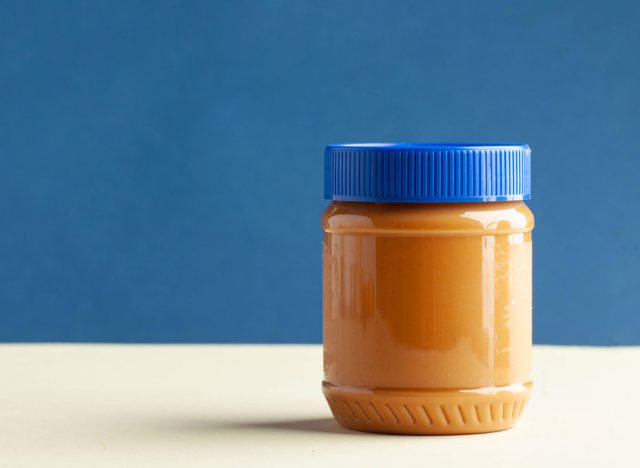
Don’t fear the fat in peanut butter! According to Harvard Health, full-fat peanut butter has the same saturated-to-unsaturated fat ratio as olive oil, one of the heart-healthiest foods around. In fact, Harvard reports that many studies have shown people who regularly eat peanut butter have a lower risk of heart disease and type 2 diabetes than those who rarely include it.
Besides, to take the fat out of peanut butter, you have to take out some of the most critical ingredients: peanuts! Jif’s Reduced-Fat Creamy Peanut Butter is only 60% peanuts (the remainder of its creaminess comes from pea protein and hydrogenated vegetable oils).
Light mayonnaise
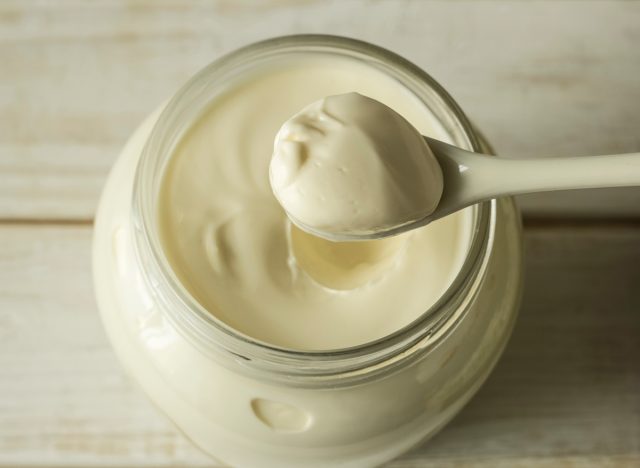
Traditional mayo gets its signature richness from egg yolks, which contain about 5 grams of fat each. So how do you make the sandwich spread without ’em? The answer isn’t pretty. Low-fat mayos frequently add thickeners, such as modified food starch, and lean on soybean oil, rather than eggs, for smoothness. Though these ingredients aren’t dangerous, they don’t offer the nutrition of real egg yolks, which contain vitamins like A, B12, and D, plus antioxidants like lutein, zeaxanthin, and selenium.
Low-fat energy bars
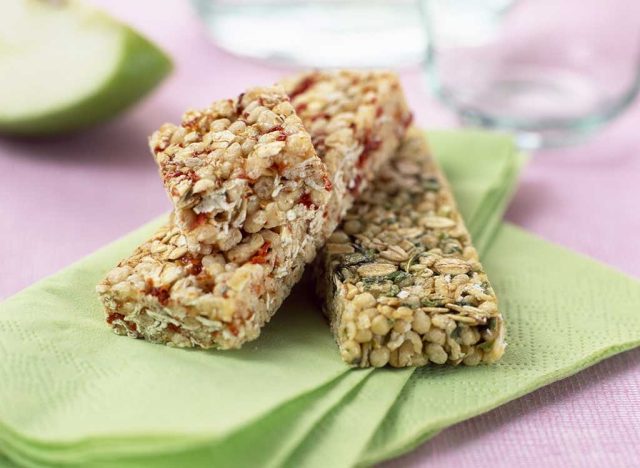
Energy bars have a so-called “health halo,” making it easy to believe they’re inherently nutritious. But that’s not always the case. Low-fat energy bars can be ultra-processed and packed with funky ingredients. Protein One’s Strawberries and Cream bars, for example, may be low-fat at just 2 grams per bar, but their ingredient list reads like a chemical formula of artificial flavors, colors, syrups, and oils.
Low-fat cookies
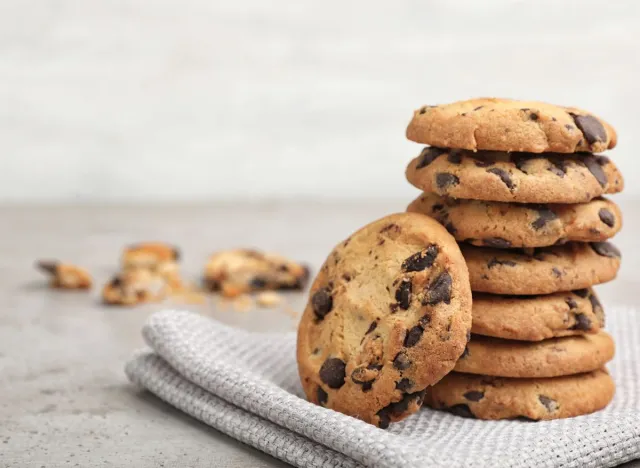
Believe it or not, high sugar consumption has been more consistently linked with weight gain than high fat consumption. Since low-fat cookies are often high-sugar, choosing them is a tradeoff that’s probably not worth making.
Take Oreo Thins. Their first ingredient is sugar, and the small amount of fat they contain comes partly from palm oil, a tropical oil that has been linked with low environmental sustainability. If you’re gonna have a cookie, you might as well enjoy a full-fat version with higher-quality ingredients.
Margarine
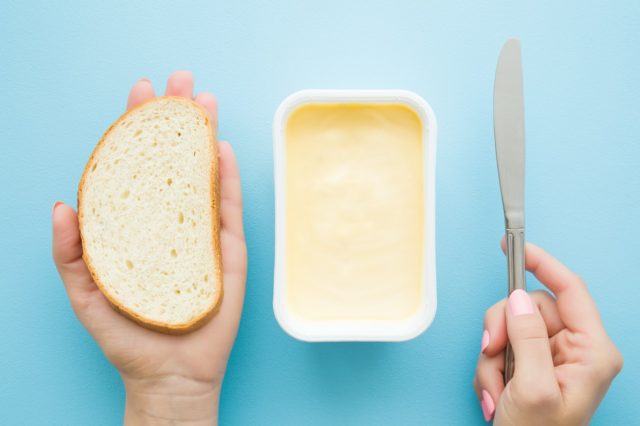
There’s a good reason margarine has fallen in popularity since its 1970s glory days. According to Harvard Health, “there never was any good evidence that using margarine instead of butter cut the chances of having a heart attack or developing heart disease.” Some margarines may be lower in fat than real butter, but both are high in calories, so they’re both foods to use sparingly.
Low-fat salad dressing
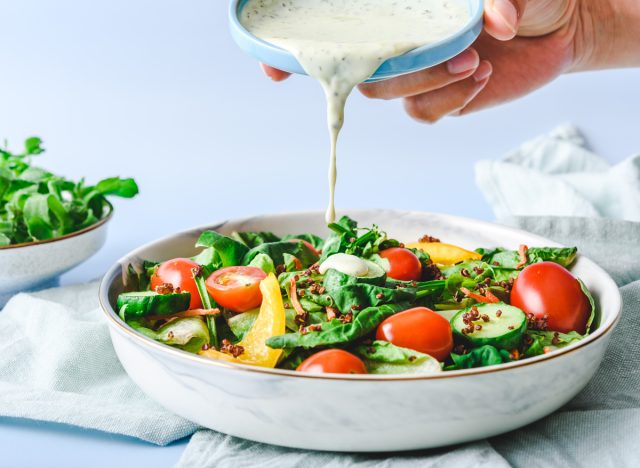
If you don’t pay attention while you pour, salad dressing can easily add up to a lot of calories. After all, most dressings are made with oil! It makes sense, then, that a low-fat version could help you cut back on your calorie intake.
Still, watch out for low-fat dressings. Some make up for their low fat content by adding extra sweeteners and starches. Hidden Valley Original Fat-Free Ranch, for example, lists corn syrup as its third ingredient, and then goes on to feature a laundry list of artificial colors and preservatives.
Low-fat canned soup
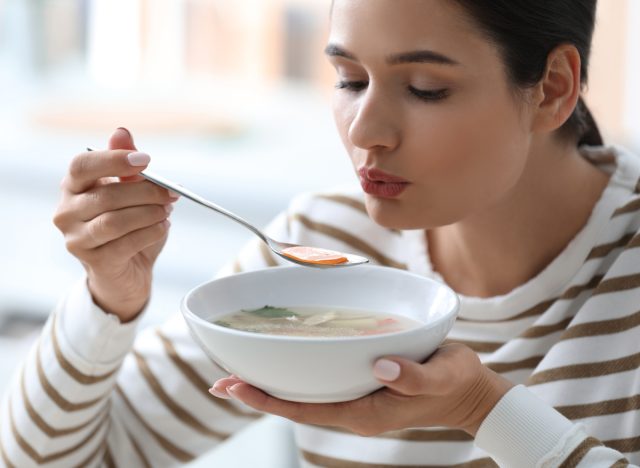
Just because a soup is “light” doesn’t mean it’s a picture of health. Many canned soups are still chock-full of sodium. Progresso’s Light Broccoli Cheese Soup, for example, contains 720 milligrams of sodium (32% of the Daily Value) per cup. It also provides minimal protein at just 4 grams per serving.
Low-fat crunchy snacks
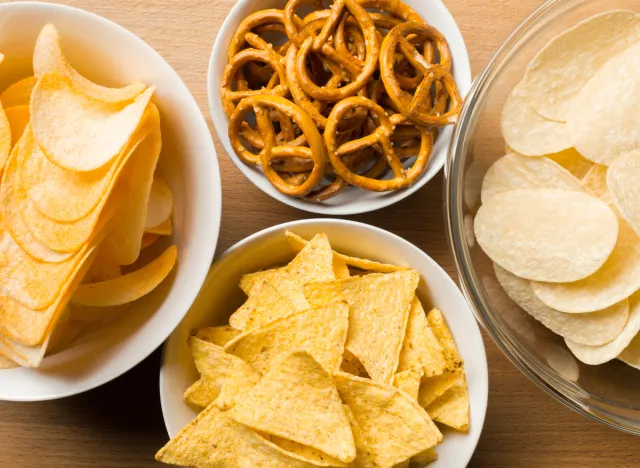
While low-fat chips, pretzels, or puffs may offer fewer calories than their full-fat versions, one thing doesn’t change: these foods are still usually highly processed. To be a savvy, healthy eater, look at labels to see what you’re getting. Low-fat or not, a lengthy ingredient list is a red flag that your crunchy fix isn’t boosting your health.







